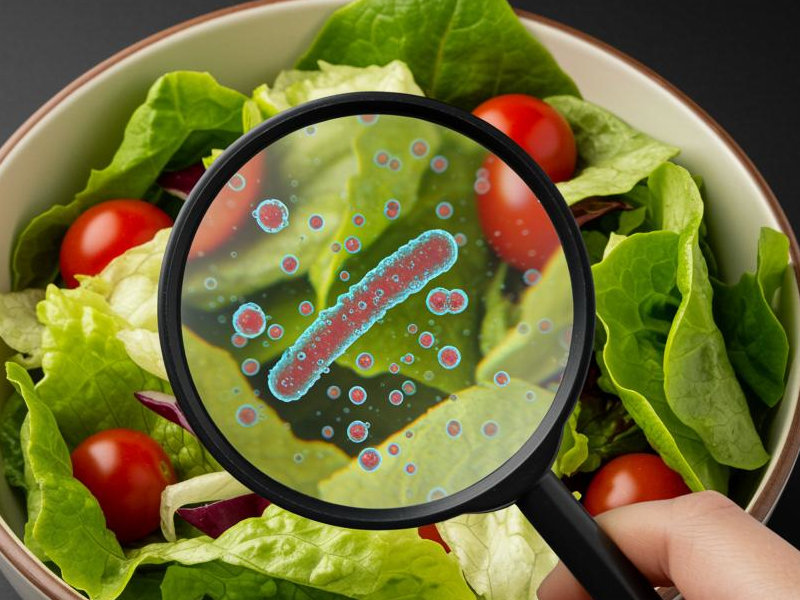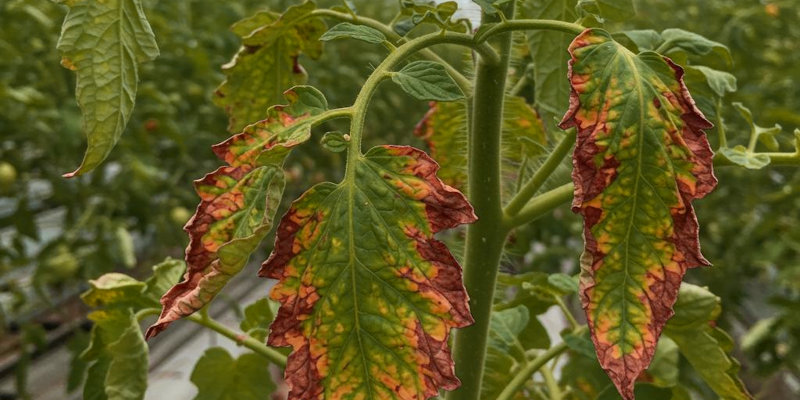Pete Jorgensen
Plant Science & Horticulture
Water Management
Reducing the risk of waterborne pathogens from roof-harvested irrigation water
Human Pathogens
There are increasing outbreaks of food-borne disease associated with increased consumption of green/leafy vegetables. Of particular concern are salad vegetables that are eaten without being cooked. The repercussions of an outbreak of salmonella or e.coli traced back to a specific producer could be economically catastrophic.
Roof-harvested rainwater can contain numerous human pathogens including salmonella, legionella, campylobacter, listeria, and various faecal coliforms. Plants generally do not identify human pathogens as problematic and will tolerate their presence. It is possible for human pathogens to become internalized within a plant if they land on the exterior of the upper parts, whereas pathogens taken in from the rhizosphere are more likely to be blocked from spreading through the stem. Ensuring that these organisms do not present a danger to human health requires water storage to be managed responsibly. American news channel CNN, report that 46% of incidences of food poisoning in the USA are traceable to fresh fruit and vegetables and the World Health Organization estimates that 10% of the global population are made sick every year from contaminated food – 420 000 are killed.
Incidents in the UK have generally been attributed to imported produce, however, there is little governance in the UK with regard to inspections and testing of fresh produce. There is an assumption that producers washing food before it is sold and advising consumers to wash food post-sale will sufficiently mitigate any risk. Washing may reduce the risk but it does not eliminate it - it also ignores the issue of internalized pathogens. Choosing not to wash produce before bagging it may compound the risk, but post harvest handling must also ensure minimal structural damage to prevent microbes from entering the deeper tissues of the plant material.

Commercially produced fresh fruit and salad can carry hidden risks from pathogenic microbes.
Contaminated irrigation water is a major source of Phytophthora sp., fungi, parasitic nematodes, bacteria, and plant viruses. Pathogenic microbes can be carried from infected ground by any number of methods. Many pathogens are carried on the wind, and wildlife - particularly birds - may infect an open-topped tank by drinking from it, bathing in it, or dropping detritus / faeces while passing overhead.
A survey of UK horticultural enterprises with outdoor reservoirs found that the majority contained phytopathogenic oomycetes, save for during the coldest months. Ecosystems are dynamic: the proliferation of organisms, or the introduction of novel organisms, may increase the risk of significant crop contamination in the future.

An example of how symptoms of Verticilium wilt might present in tomato crops; general wilting, necrotic edges, reduction in green colouring, and yellowing further inwards.
Recommendations
Open bodies of water can encourage the formation of algae, providing a food source and habitat for greenhouse pests. One example is Scatella stagnalis, also known as 'Shore Fly', whose larvae feed on algae. This fly is not considered a major crop pest, but it can spread both human and plant pathogens, carrying them on its body and infecting landing sites. In many cases, contaminated fresh produce is linked to the use of animal manure or proximity to animal faecal matter. Even farms that use no animal products may be bordered with, or proximate to, farmland occupied by defecating animals and manured with slurry. Keeping water storage tanks covered when not in use will help prevent the ingress of pest organisms, reduce the chance of wind borne pathogens entering the water, and block sunlight – reducing algae formation.
Farms should consider upgrading to a drip irrigation system if they are not already in use. There is a significant risk of the spread of human and plant pathogens from the use of sprinkler systems - the Scottish Food Agency ranks overhead sprinklers as the riskiest. A single water splash is capable of sending pathogenic bacteria up to 45cm from the point of impact. Using drip irrigation is recommended by the UN specifically to help avoid this problem. Another advantage of this style of irrigation is the reduction of water usage - up to 80% less.
It is good practice to wash produce and bag it in a hygienic environment. This is especially the case for cut salad leaves, which are then bagged in plastic. Should irrigation water become a source of contamination, this step will reduce the risk to the consumer.
Clear standing water - especially areas within the greenhouses where pooled water collects. Improve drainage if possible.
Use biofilters in water management systems.
Regular testing of the water in the tank and at the point of delivery would be the best indicator of sustainable performance. It would ensure early remedial action could be taken should a water contamination issue be identified. General testing will indicate the overall microbial presence in water. More thorough testing may be prohibitively expensive for the small producer, especially if it includes screening for human pathogens. Keeping a maintenance and usage log would be a useful means of documenting the organization's efforts with regard to water use. This may also be useful if required to defend against legal action.
Further reading
Ahmed, W. et al., 2010. Health risk from the use of roof-harvested rainwater in Southeast Queensland, Australia, as potable or nonpotable water, determined using quantitative microbial risk assessment. Applied and Environmental Microbiology, 76(22), pp. 7382-7391.
Allende, A. & Monaghan, J., 2015. Irrigation water quality for leafy crops: a perspective of risks and potential solutions. International journal of environmental research and public health, 12(7), pp. 7457-7477.
Berger, C. N. et al., 2010. Fresh fruit and vegetables as vehicles for the transmission of human pathogens. Environmental Microbiology, 12(9), pp. 2385-2397.
Deering, A. J. et al., 2012. Internalization of E. coli O157: H7 and Salmonella spp. in plants: a review. Food Research International, 45(2), pp. 567-575.
Despins, C. et al., 2009. Assessment of rainwater quality from rainwater harvesting systems in Ontario, Canada. Journal of water supply: Research and Technology-Aqua, 58(2), pp. 117-134.
Hong, C. X. & Moorman, G. W., 2005. Plant pathogens in irrigation water: challenges and opportunities. Critical Reviews in Plant Sciences, 24(3), pp. 189-208.
Monaghan, J. & Hutchison, M., 2010. Monitoring microbial food safety of fresh produce. [Online] Available at: https://www.food.gov.uk/sites/default/files/multimedia/pdfs/microbial.pdf [Accessed 10 March 2018].
Pettitt, T. R. & Skjøth, C. A., 2016. A simple model describes development of early peaks in oomycete zoospore inoculum detected in southern UK outdoors horticultural reservoirs. Acta Agrobotanica, 69(2), pp. 1-7.
Siddique, H., 2016. Broken leaves in salad bags raise salmonella risk 2,400-fold – study. [Online] Available at: https://www.theguardian.com/world/2016/nov/18/broken-leaves-in-salad-bags-raise-salmonella-risk-study [Accessed 7 March 2018].